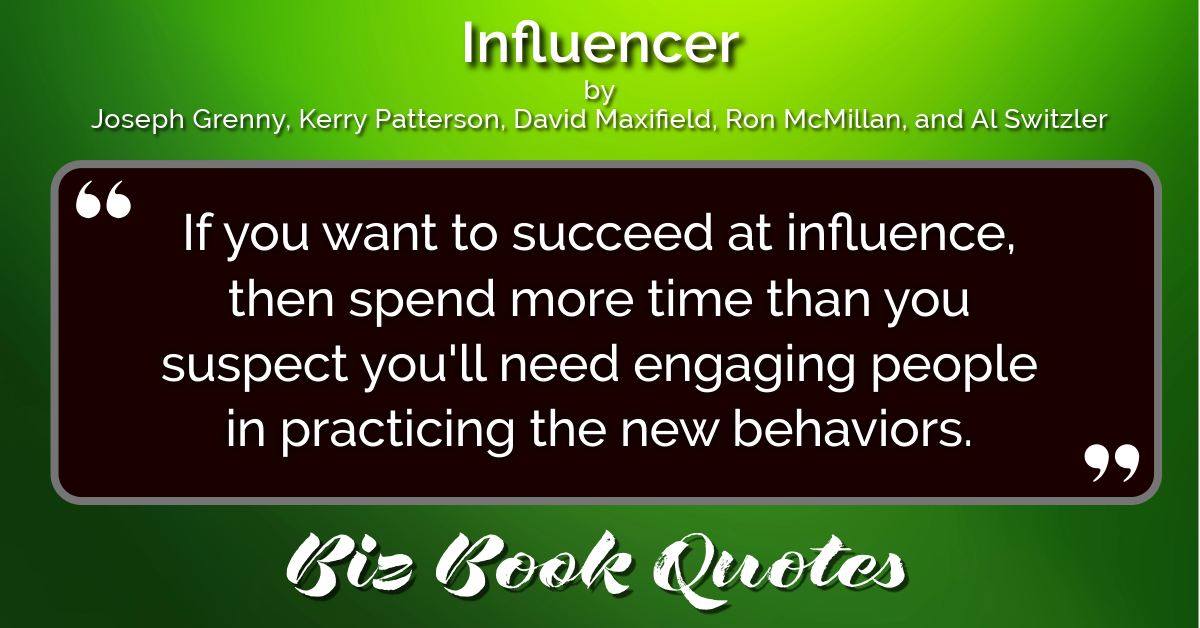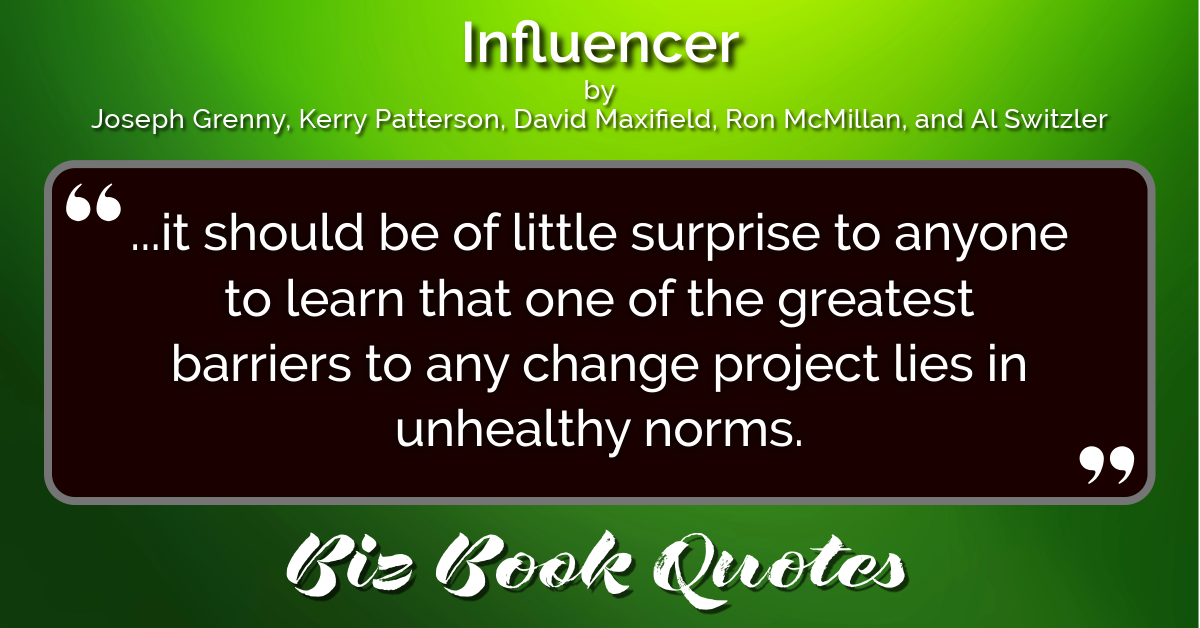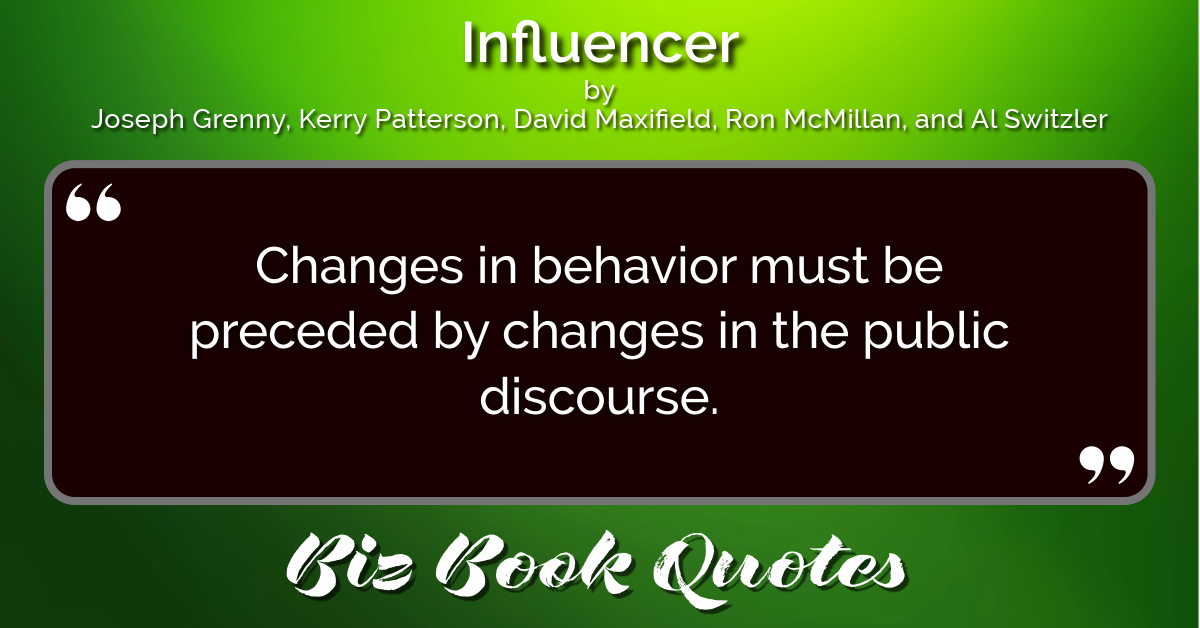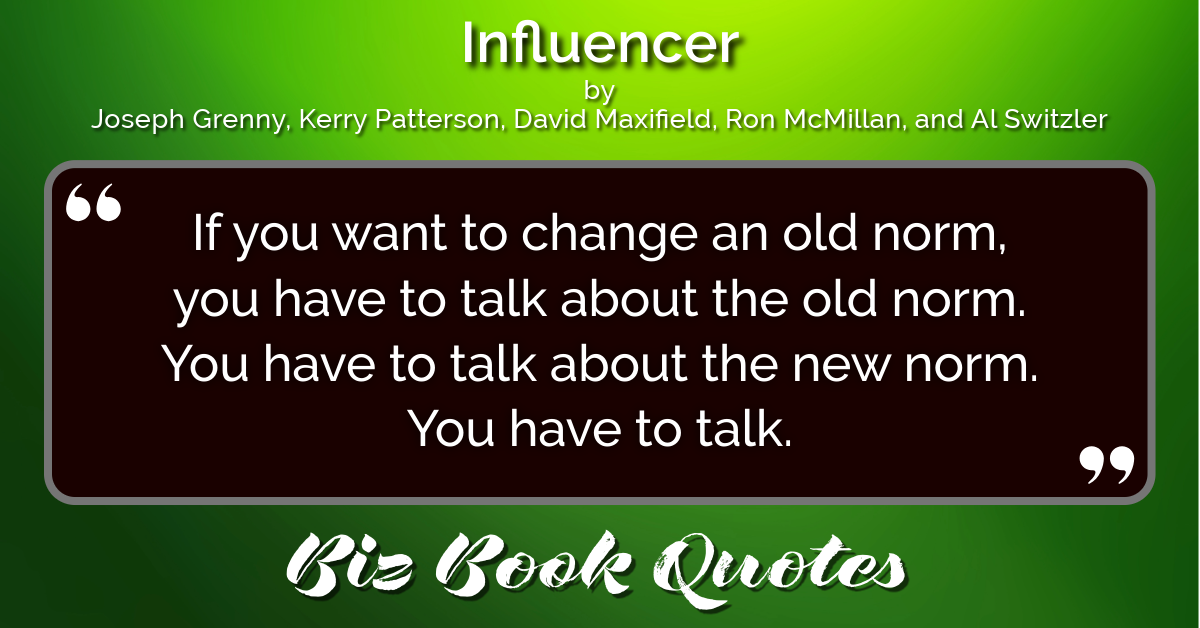 |
Initially, failure signals the need for greater effort or persistence. Sometimes failure signals the need to change strategies or tactics. But failure should rarely signal that we’ll never be able to succeed.
|
135 |
 |
Once you change where you think, you can change how you think.
|
142 |
 |
If you want to succeed at influence, then spend more time than you suspect you’ll need engaging people in practicing the new behaviors.
|
142 |
 |
…in order to encourage [people] to change, you have to trust them to change, you have to generate clear, unambiguous evidence that they can believe you.
|
157 |
 |
When you ask people to make changes that can be disruptive, difficult, and even frightening, they aren’t likely to embrace your call to action.
|
158 |
 |
If you want to increase your influence with those you hope to help change… you’re going to have to make some sacrifices.
|
158 |
 |
…if you want to influence change, it’s essential that you engage the chain of command.
|
163 |
 |
…it should be of little surprise to anyone to learn that one of the greatest barriers to any change project lies in unhealthy norms.
|
173 |
 |
Changes in behavior must be preceded by changes in the public discourse.
|
175 |
 |
If you want to change an old norm, you have to talk about the old norm. You have to talk about the new norm. You have to talk.
|
177 |